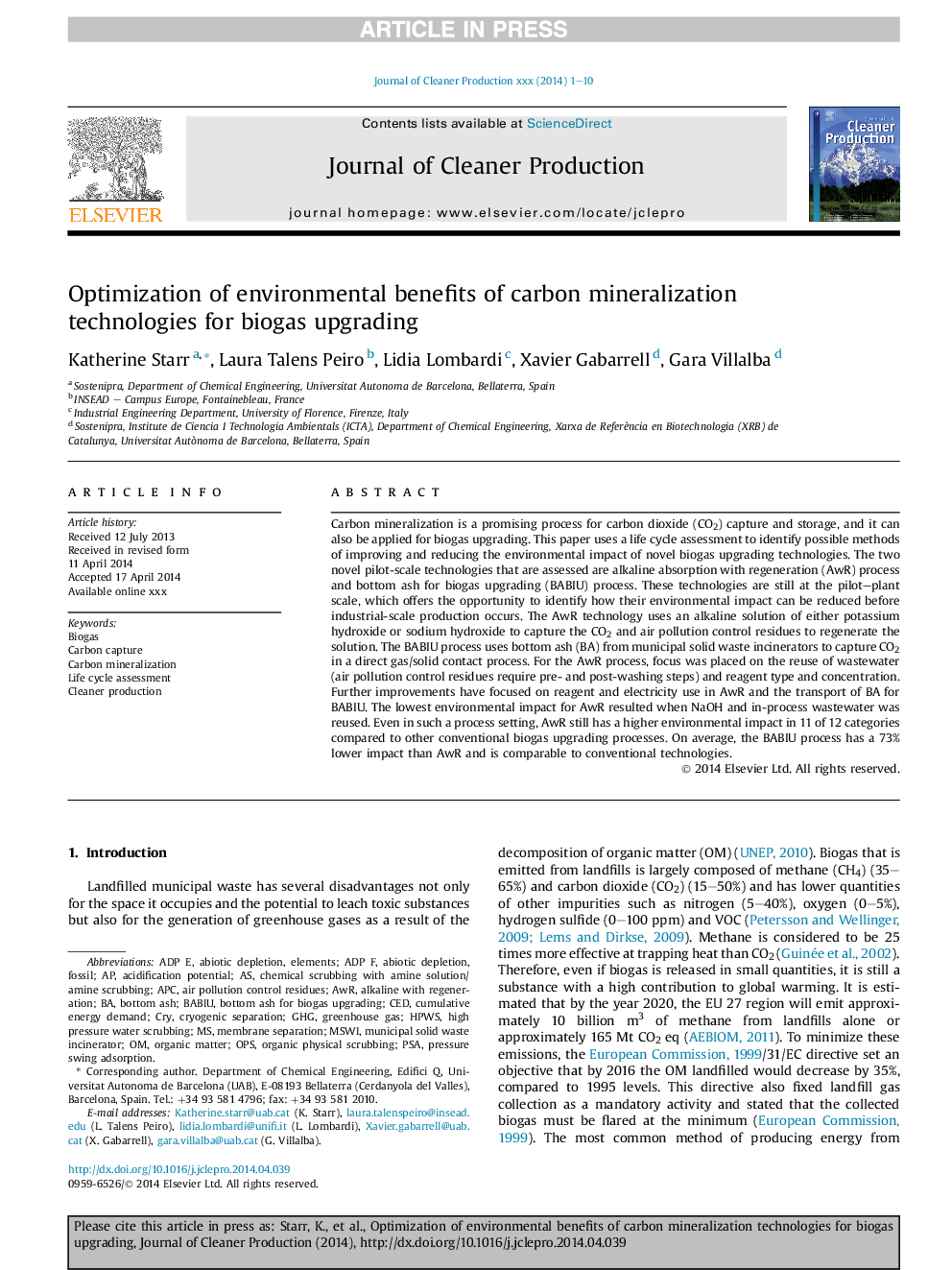| Article ID | Journal | Published Year | Pages | File Type |
|---|---|---|---|---|
| 8106129 | Journal of Cleaner Production | 2014 | 10 Pages |
Abstract
Carbon mineralization is a promising process for carbon dioxide (CO2) capture and storage, and it can also be applied for biogas upgrading. This paper uses a life cycle assessment to identify possible methods of improving and reducing the environmental impact of novel biogas upgrading technologies. The two novel pilot-scale technologies that are assessed are alkaline absorption with regeneration (AwR) process and bottom ash for biogas upgrading (BABIU) process. These technologies are still at the pilot-plant scale, which offers the opportunity to identify how their environmental impact can be reduced before industrial-scale production occurs. The AwR technology uses an alkaline solution of either potassium hydroxide or sodium hydroxide to capture the CO2 and air pollution control residues to regenerate the solution. The BABIU process uses bottom ash (BA) from municipal solid waste incinerators to capture CO2 in a direct gas/solid contact process. For the AwR process, focus was placed on the reuse of wastewater (air pollution control residues require pre- and post-washing steps) and reagent type and concentration. Further improvements have focused on reagent and electricity use in AwR and the transport of BA for BABIU. The lowest environmental impact for AwR resulted when NaOH and in-process wastewater was reused. Even in such a process setting, AwR still has a higher environmental impact in 11 of 12 categories compared to other conventional biogas upgrading processes. On average, the BABIU process has a 73% lower impact than AwR and is comparable to conventional technologies.
Keywords
PSAHPWSMSWIAPCGHGCEDOPsLife Cycle AssessmentBiogascumulative energy demandCleaner productionMembrane separationCryogenic separationpressure swing adsorptionBottom ashMunicipal solid waste incineratorAWRCarbon captureorganic matterAir pollution control residuesAcidification PotentialCarbon mineralizationGreenhouse gasCry
Related Topics
Physical Sciences and Engineering
Energy
Renewable Energy, Sustainability and the Environment
Authors
Katherine Starr, Laura Talens Peiro, Lidia Lombardi, Xavier Gabarrell, Gara Villalba,
